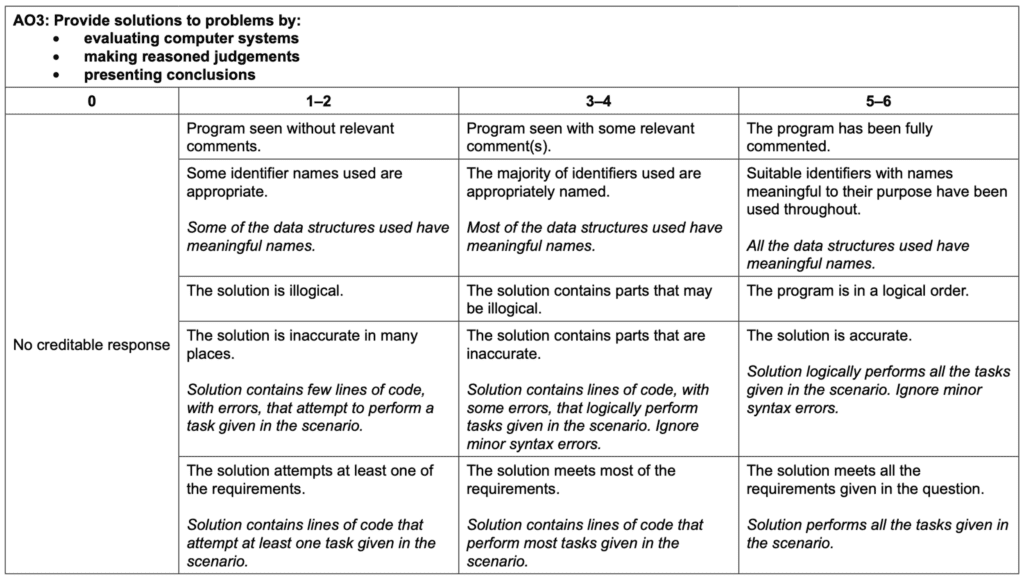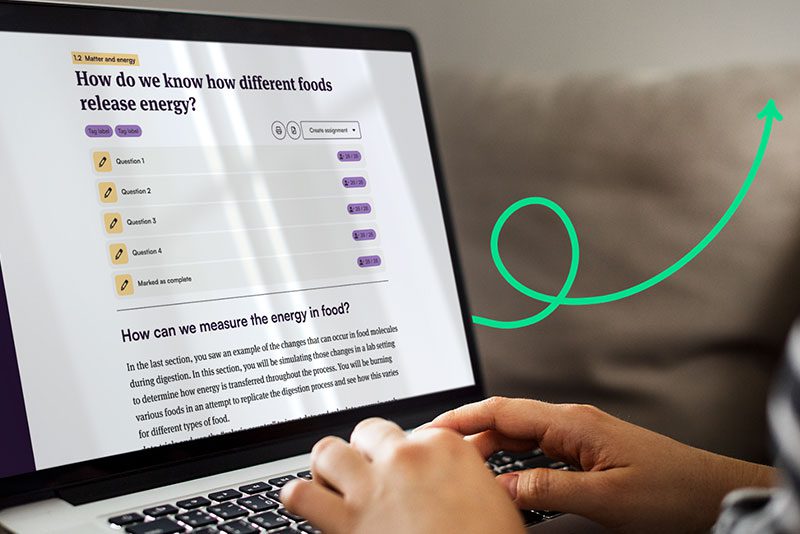Cambridge IGCSE™ Computer Science Update: What’s New?
The Cambridge IGCSE™ Computer Science syllabus update is out now, ready for first examination in 2023. What does this mean for your teaching? Here, Shruthi Satheesh takes a look at:
- New topics
- Changes to assessment content and weightings
- Improvements in the new syllabus
- Suggested teaching strategies
Shruthi recently hosted a webinar with Kognity on the Cambridge IGCSE™ Computer Science syllabus update. To learn about the changes in more detail, watch the recording!
Cambridge IGCSE™ Computer Science for 2023
I hope by now you’ve had a chance to get your hands dirty with the new syllabus (FE2023), but if you haven’t yet, that’s alright too. Here I’ll provide you with a quick snapshot of what’s new, what has changed and what you will need to look out for in the updated Cambridge IGCSE Computer Science syllabus.
What’s new in the updated syllabus?
You might have noticed that there are some new additions to the list of topics. ‘Automated and Emerging Technologies’ has been introduced, highlighting aspects of expert systems and machine learning. This is a great move by Cambridge, and a clear bid to keep the curriculum current and interesting. Pupils will understand and even evaluate first-hand how machines can be ‘trained’ and how ‘rules’ make up a system’s ‘intelligence’. This topic couldn’t have come in at a better time, considering the rapid emergence of artificially sentient systems such as autonomous cars and image recognition systems.
These systems are made up of a ‘knowledge base’, a ‘rule base’ and an ‘inference engine’, and the topics will hopefully stir fruitful classroom discussions. Who is responsible for these rules? Is this knowledge base globally accepted?
MIT’s moral machine for autonomous cars is a great starting point for fun classroom discussion, before you get into the concept of the rule base. This article is great for concluding thoughts – by the end of the unit, pupils should be able to handle this type of material. Time permitting, I recommend the teachable machine by Google, which makes for a fun and highly educational activity on machine learning.
What else is changing?
‘Boolean Logic’ has its own special place in Paper 2 in the new syllabus. This allows for more time spent on logical thinking activities. And given the new equal weighting of the papers (both are now worth 50%), ‘Boolean Logic’ now enjoys a bigger role in paper 2. Pupils need to be able to convert between logic statements, logic circuits and truth tables interchangeably.
The pre-release has gone! It’s been replaced by a scenario-based question, which mimics a pre-release question… so maybe it hasn’t really gone after all. Pupils should be able to tackle a question centred around a scenario. Naming variables appropriately, commenting and abstracting should all be second nature by the end of Topics 7 and 8.
From the specimen paper, I could glean that the student can choose how to express solutions: either using pseudocode or program code. Owing to this, I like to draw similarities between Topics 7 and 8 frequently, to make it easier for the pupil to draw analogies.
What’s worked well for me is drawing out commonalities in all three components consistently – for example, linking the input symbol in a flowchart to input in pseudocode and keyboard input in Python. This helps students to see the bigger picture from the get-go.
Why is it better?
With Paper 2 now enjoying the same status as Paper 1 in the final reckoning, the message is clear: pupils need application abilities as much as theoretical knowledge. This curriculum also leads into AS/A levels or the IBDP very well, touching upon the fundamentals that allow for a smoother transition into senior school.

And as you can see above, the rubric is more accommodating for the scenario-based questioning than the previous bulleted rubric was for pre-release questions in Paper 2. The emphasis is on completing tasks in a logical manner, and it is forgiving of syntax errors that do not significantly change the outcome.
Teaching Strategies – what works well?
I have found that the following teaching strategies work well in my classroom. Why not give them a try?
Linking topics
Wherever possible, I like to weave a story – for example tracing the route from binary to colour to logic, or from transmission to the internet. This allows pupils to seed the bigger picture by connecting the dots.
Vocabulary crosswords
This one might be a bit old fashioned – “why bother when I can have digital flashcards?”, you might think! Nevertheless, I have observed firsthand that crosswords can be really beneficial, especially for EFL learners. They provide a fun way for students to get acquainted with the key terms.
Taking advantage of tech
Gamify your classroom using tech. For example, Kahoot! provides a great way to introduce the concept of sequencing in questions requiring algorithmic thinking, especially through questions such as: “arrange the following steps in order to find if the input is an even or odd number…”
Watch our webinar – “Level Up: Game-based learning and gamification in the classroom”
Flipped learning
I like to flip the classroom at times. First I introduce a concept in a lesson. The subsequent lesson involves independent research on the concept and assimilation of this knowledge, for example by watching a video and answering questions. This allows for more open questions, and for us as teachers to observe visible thinking in action.
Real-life examples
I often ask my pupils to read and deconstruct a tech news article that is relevant to their curriculum. For example, I recently introduced an article about how Samsung offers “extra RAM” in their phones. By the end of the hardware unit, pupils were able to comprehend and appreciate what was happening in the article. This worked well as a reflection activity with an essential understanding question: how is RAM and secondary memory used to provide ‘virtual memory’?
The Syllabus Update – in a nutshell
Here are the main points:
- New topic on machine learning and expert systems (Topic 6)
- Papers 1 and 2 now have equal weighting
- ‘Boolean Logic’ has moved into Paper 2
- There is no longer a pre-release; instead there is a scenario-based question in Paper 2
I discussed these aspects in more detail in my recent webinar. Watch the recording here!
Blog articles





